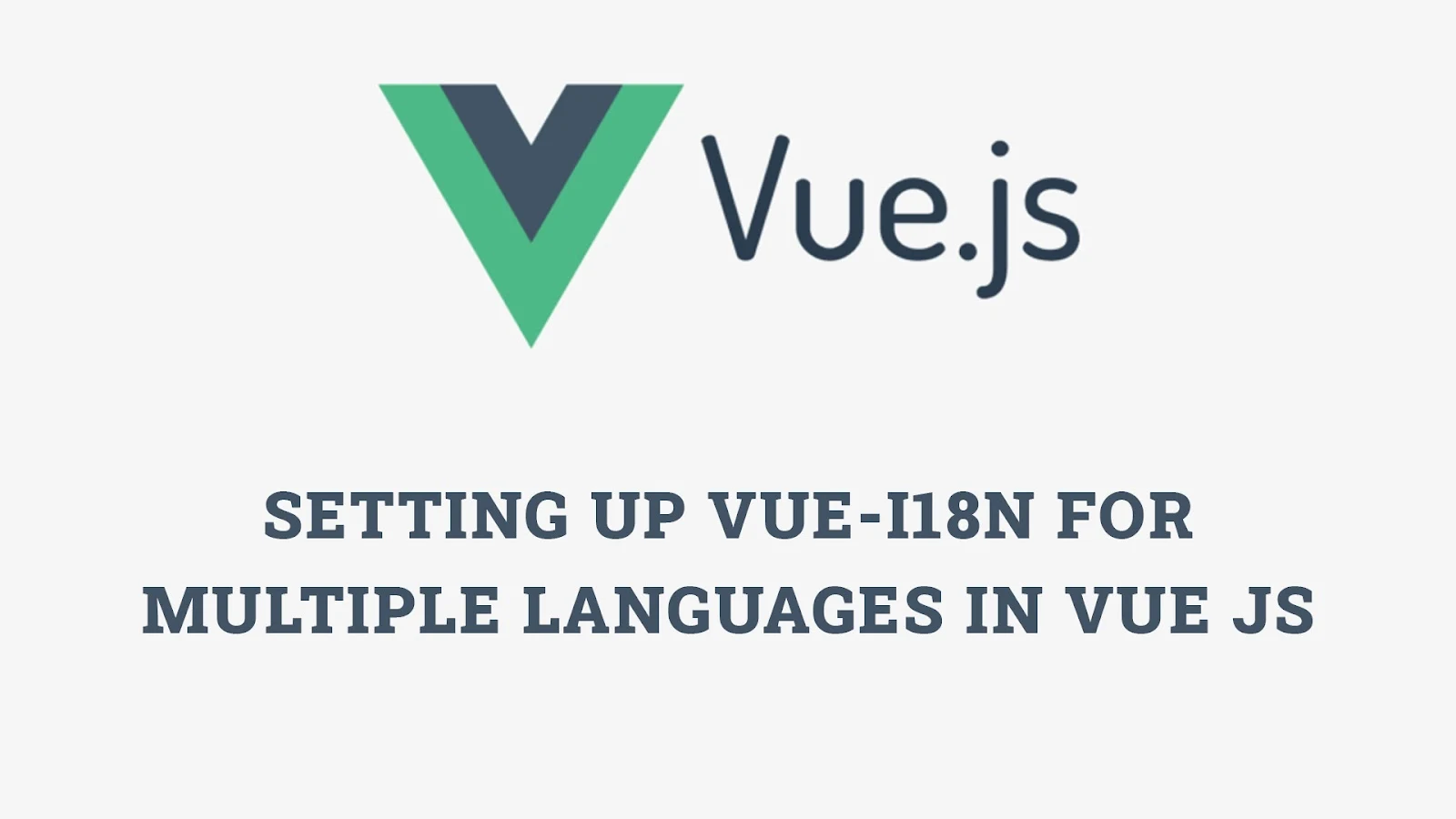Introduction
Internationalization (i18n) is crucial for building applications that support multiple languages and provide a localized experience for users. The vue-i18n library is a powerful tool for managing translations and localization in Vue.js applications. This article provides a step-by-step guide to setting up vue-i18n for multiple languages in Vue.js, ensuring that the content is original, detailed, and easy to understand.
Installing vue-i18n
The first step in setting up vue-i18n is to install the library in your Vue.js project. You can do this using npm or yarn.
Example: Installing vue-i18n with npm
# Install vue-i18n
$ npm install vue-i18n
Example: Installing vue-i18n with yarn
# Install vue-i18n
$ yarn add vue-i18n
Explanation
In the examples above, vue-i18n is installed using npm and yarn. This library will enable you to manage translations and localization in your Vue.js application.
Setting Up vue-i18n in Your Project
Once vue-i18n is installed, you need to configure it in your Vue.js project. This involves creating a new instance of vue-i18n and providing the translation messages for different languages.
Example: Setting Up vue-i18n
// src/main.js
import Vue from 'vue';
import App from './App.vue';
import VueI18n from 'vue-i18n';
Vue.use(VueI18n);
const messages = {
en: {
welcome: 'Welcome'
},
fr: {
welcome: 'Bienvenue'
}
};
const i18n = new VueI18n({
locale: 'en',
messages
});
new Vue({
i18n,
render: h => h(App)
}).$mount('#app');
Explanation
In the example above, vue-i18n is configured in the main.js file. A new instance of VueI18n is created with translation messages for English (en) and French (fr). The locale is set to English by default. The i18n instance is then passed to the Vue instance, making the translations available throughout the application.
Using Translations in Components
With vue-i18n set up, you can use translations in your components by referencing the translation keys defined in the messages object.
Example: Using Translations in a Component
<!-- src/components/WelcomeMessage.vue -->
<template>
<p>{{ $t('welcome') }}</p>
</template>
<script>
export default {};
</script>
Explanation
In the example above, the $t function is used to access the translation for the welcome key in the WelcomeMessage component. The translation will be displayed based on the current locale set in the vue-i18n instance.
Switching Languages
To provide a localized experience, you need to allow users to switch between different languages. This can be done by changing the locale property of the vue-i18n instance.
Example: Switching Languages
<!-- src/components/LanguageSwitcher.vue -->
<template>
<div>
<button @click="switchLanguage('en')">English</button>
<button @click="switchLanguage('fr')">Français</button>
</div>
</template>
<script>
export default {
methods: {
switchLanguage(lang) {
this.$i18n.locale = lang;
}
}
};
</script>
Explanation
In the example above, the LanguageSwitcher component provides buttons for switching between English and French. The switchLanguage method updates the locale property of the vue-i18n instance, changing the language of the application.
Loading Translation Messages Dynamically
For larger applications with many languages, it is efficient to load translation messages dynamically. This can be done by using the async feature of vue-i18n.
Example: Loading Translation Messages Dynamically
// src/main.js
import Vue from 'vue';
import App from './App.vue';
import VueI18n from 'vue-i18n';
Vue.use(VueI18n);
const i18n = new VueI18n({
locale: 'en',
messages: {}
});
const loadedLanguages = [];
function setI18nLanguage(lang) {
i18n.locale = lang;
return lang;
}
function loadLanguageAsync(lang) {
if (loadedLanguages.includes(lang)) {
return Promise.resolve(setI18nLanguage(lang));
}
return import('./locales/' + lang + '.json').then(messages => {
i18n.setLocaleMessage(lang, messages.default);
loadedLanguages.push(lang);
return setI18nLanguage(lang);
});
}
new Vue({
i18n,
render: h => h(App)
}).$mount('#app');
Explanation
In the example above, translation messages are loaded dynamically using the import function. The loadLanguageAsync function checks if the language has already been loaded. If not, it imports the translation messages from the appropriate JSON file, sets the locale messages, and updates the i18n instance. This approach is efficient for handling multiple languages in larger applications.
Fun Facts and Little-Known Insights
- Fun Fact: The term "i18n" stands for internationalization, with the "18" representing the number of letters between the "i" and "n" in the word.
- Insight: Properly localized applications can reach a broader audience and provide a more inclusive user experience, enhancing user satisfaction and engagement.
- Secret: Regularly updating and testing your translations with native speakers can ensure accuracy and cultural relevance, improving the overall quality of your application.
Conclusion
Setting up vue-i18n for multiple languages in a Vue.js application is essential for providing a localized experience for users. By following best practices such as installing vue-i18n, configuring it in your project, using translations in components, allowing users to switch languages, and loading translation messages dynamically, developers can create multilingual applications that are more inclusive and user-friendly. The active and supportive Vue.js community, combined with comprehensive documentation, ensures that you have all the resources needed to succeed in building modern and efficient Vue.js applications with internationalization support.
 Reviewed by Curious Explorer
on
Monday, December 02, 2024
Rating:
Reviewed by Curious Explorer
on
Monday, December 02, 2024
Rating:




No comments: